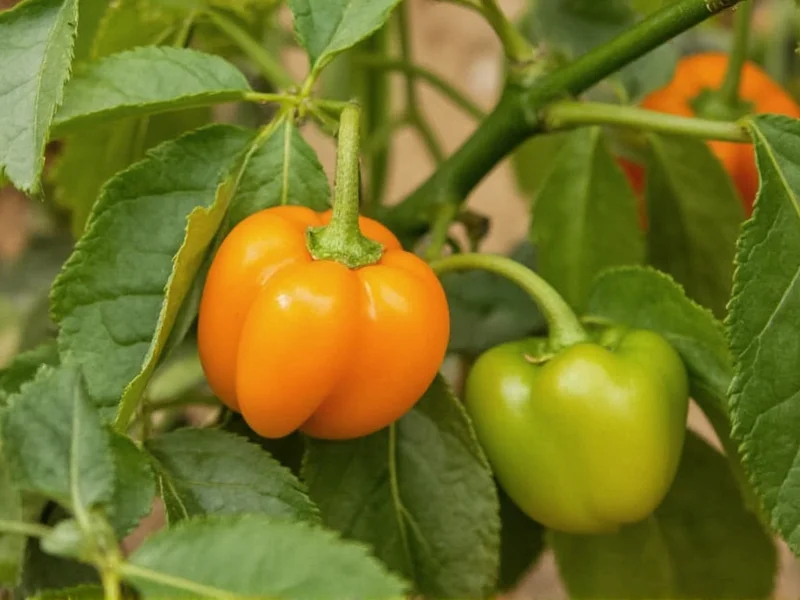Understanding what do pasilla peppers taste like requires examining both their fresh and dried forms, as their flavor profile transforms significantly during the drying process. Fresh pasillas (known as chilaca peppers) have a grassier, greener flavor, while dried pasillas develop the characteristic deep, complex taste that makes them a staple in Mexican cuisine.
Breaking Down the Pasilla Pepper Flavor Profile
When evaluating what do pasilla peppers taste like when dried, several distinct flavor elements emerge:
- Earthy foundation - The dominant characteristic, providing a grounding base note similar to mushrooms or dark soil
- Dried fruit complexity - Notes of prune, raisin, and sometimes fig become pronounced, especially when toasted
- Subtle berry hints - A faint raspberry or blackberry undertone that adds dimension
- Chocolate whispers - Some detect a very mild cocoa-like nuance, particularly in aged peppers
- Smoke without fire - A natural smokiness develops during drying, though not as pronounced as chipotle
This nuanced flavor profile explains why pasilla peppers are often called the “workhorse” of Mexican mole sauces, where their complex taste blends seamlessly with chocolate, spices, and other ingredients.
Pasilla Heat Level: Mild but Present
Many searchers wonder are pasilla peppers hot compared to other chilies. Ranking between 1,000-2,500 on the Scoville scale, pasillas sit at the milder end of the spectrum:
| Pepper Type | Scoville Heat Units | Heat Comparison |
|---|---|---|
| Pasilla | 1,000-2,500 | Mild warmth, noticeable but not overwhelming |
| Ancho | 1,000-2,000 | Slightly sweeter, less earthy than pasilla |
| Guajillo | 2,500-5,000 | Tangier, more acidic than pasilla |
| Jalapeño | 2,500-8,000 | Significantly hotter than pasilla |
The heat builds gradually rather than hitting immediately, allowing the complex flavors to register before any warmth registers on your palate. This makes pasilla peppers particularly valuable for dishes where you want chili flavor without excessive heat.
Pasilla vs Ancho vs Guajillo: Understanding the Differences
When exploring pasilla pepper flavor profile compared to ancho varieties, the distinctions become crucial for authentic cooking:
- Pasilla vs Ancho: Anchos (dried poblanos) offer a sweeter, fruitier profile with notes of raisin and tobacco, while pasillas provide deeper earthiness with more pronounced dried fruit characteristics. Anchos run slightly milder on the heat scale.
- Pasilla vs Guajillo: Guajillos deliver brighter, tangier flavors with notes of green tea and berries, whereas pasillas offer richer, darker earthiness. Guajillos typically run hotter than pasillas.
- Pasilla vs Mulato: Mulatos (another dried poblano variant) have a more pronounced chocolate flavor with hints of licorice, while pasillas maintain that distinctive prune-like fruitiness.
These subtle but important differences explain why traditional Mexican recipes specify particular chili varieties – substituting incorrectly can dramatically alter the final dish's flavor profile.
Culinary Applications: How Pasilla Flavor Transforms Dishes
Understanding how to use pasilla peppers in cooking begins with recognizing how their flavor interacts with other ingredients. The earthy, fruity notes make them exceptionally versatile:
- Mole sauces – The foundational pepper in many mole negro recipes, where its earthiness balances chocolate's sweetness
- Stews and braises – Adds depth without overwhelming heat, perfect for beef or poultry dishes
- Salsas – When rehydrated and blended, creates complex roasted pepper salsas
- Marinades – The mild heat penetrates proteins without dominating other flavors
- Vegetable dishes – Complements roasted root vegetables and mushrooms beautifully
For optimal flavor extraction, toast dried pasillas in a dry skillet for 20-30 seconds per side until fragrant (but not burnt), then rehydrate in hot water for 15-20 minutes before use. This process intensifies their natural sweetness while mellowing any bitterness.
Fresh vs Dried: Two Different Flavor Experiences
When researching what do pasilla peppers taste like, it's essential to distinguish between fresh and dried forms:
- Fresh (chilaca) – Long, thin, dark green peppers with grassy, slightly bitter notes and moderate heat. Rarely used fresh in traditional cooking.
- Dried (pasilla) – The form almost always referenced in recipes. Develops deep earthy, fruity complexity with milder heat during the drying process.
Most grocery stores in the United States sell the dried variety when they label peppers as “pasilla.” The fresh chilaca version is much harder to find outside of Mexico and specialty markets.
Substitution Guidance When Pasillas Aren't Available
If you're wondering what dishes use pasilla peppers and need alternatives, consider these substitution options based on flavor profile rather than just heat level:
- Best overall substitute: Combine equal parts ancho (for fruitiness) and mulato (for earthiness) peppers
- For mole sauces: Use 75% ancho and 25% chipotle for similar depth with more smoke
- Quick pantry swap: Ancho powder with a pinch of cocoa powder to mimic earthiness
- For mild heat applications: Guajillo peppers, though they'll add more tanginess
When substituting, remember that pasilla pepper substitute options work best when matching the flavor profile rather than just the heat level. A pepper with similar Scoville units but different flavor characteristics won't deliver the same culinary result.
Selecting and Storing for Optimal Flavor
To experience authentic what do pasilla peppers taste like characteristics, proper selection and storage matters:
- Visual inspection: Look for deep, purplish-brown color (not black) with some flexibility – brittle peppers indicate age
- Aroma test: Should smell earthy and slightly sweet, not musty or moldy
- Storage: Keep in an airtight container in a cool, dark place for up to 6 months
- Freezing option: For longer storage, freeze dried peppers in a sealed bag for up to 1 year
Fresh pasilla peppers (chilacas) should feel firm with smooth, shiny skin and be stored in the refrigerator's crisper drawer for up to two weeks.











 浙公网安备
33010002000092号
浙公网安备
33010002000092号 浙B2-20120091-4
浙B2-20120091-4